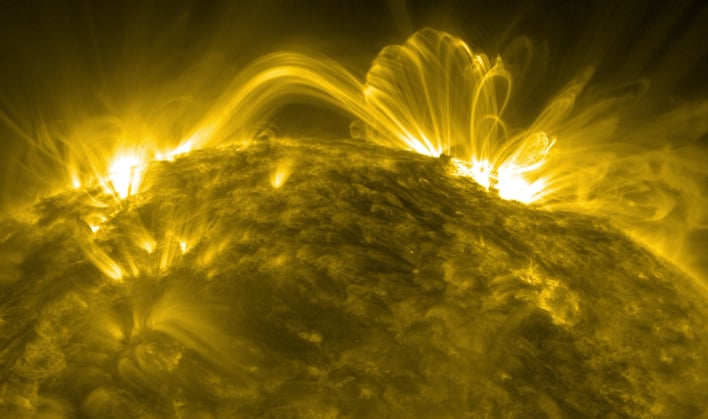Massive Sunspot Threatens A Solar Flare Event That Could Knock Out Comms On Earth

Sunspots are darkened patches on the Sun caused by its magnetic field, according to NASA. These spots are often precursors to solar flares, intense outbursts of energy from the surface of the Sun. Recent footage from NASA's Solar Dynamics Observatory of a sunspot, known as AR3038, showed how the sunspot changed over a 24 hour period, twisting and contorting.
"Yesterday, sunspot AR3038 was big. Today, it's enormous," a statement on SpaceWeather.com website read. "The fast-growing sunspot has doubled in size in only 24 hours."
The tangled magnetic fields may at times restructure itself. If this happens, a sudden explosion of light and radiation is launched from the Sun in the form of a solar flare. In the case of AR3038, it has the potential to send an M-class solar flare toward Earth. An M-type is the second strongest type of solar flare.
An M-class solar flare, while the second strongest type, tends to only cause moderate radio blackout events. If it were an M-9 flare, the strongest of the M-class, it could cause loss of radio contact for around 10 minutes in the areas affected on Earth, as well as degradation of low-frequency navigation signals.
In a post on EarthSky today, it shows AR3038 is still growing. It is said that it has increased in size by the diameter of another Earth. Also, three coronal holes have appeared on the solar disk. The post states, "These will provide high-speed solar wind, expected to impact Earth on June 23."
Predictions for the next 24 hours shows a 90% chance for C flares, 30% for M flares, and 10% for X flares (the strongest of the three). There have been no coronal mass ejections (CMEs) reported today.
Top Image Credit: NASA

